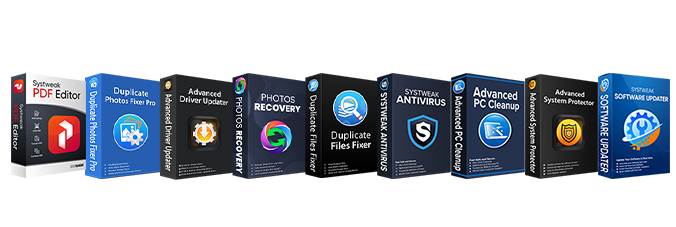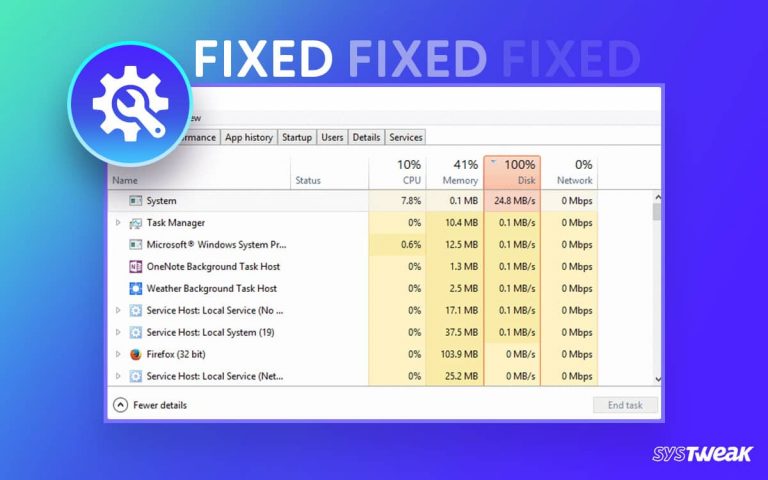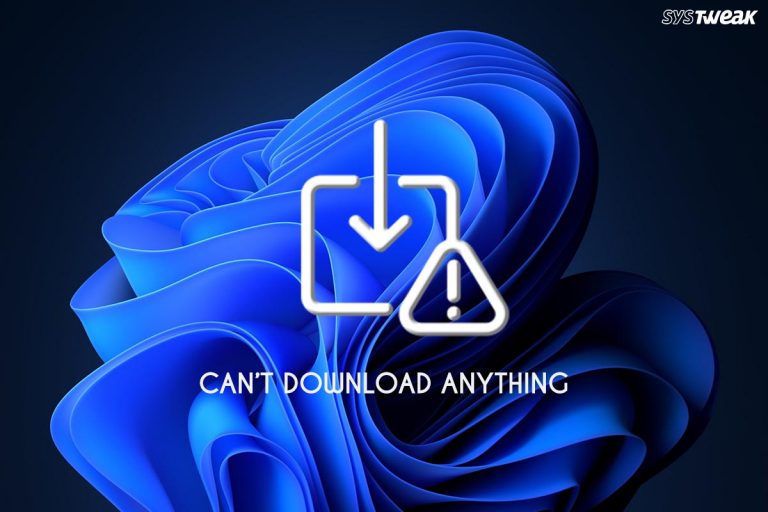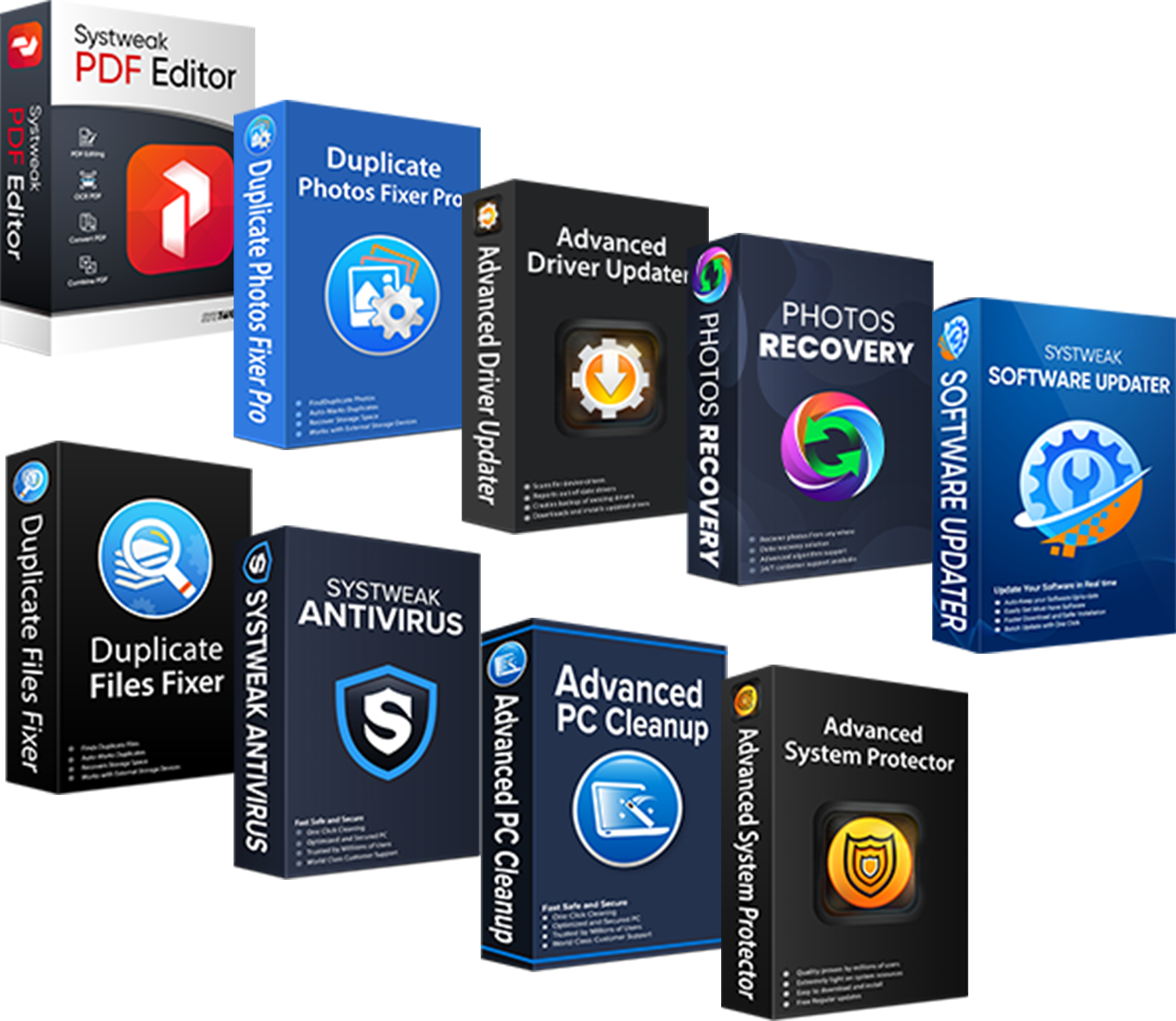Want to learn how to make your computer running on Windows 10 faster? The following tips will help speed up your PC and make it less susceptible to performance and system issues.
50% OFF

BLACK FRIDAY OFFERS
Unlock Black Friday Mega Savings — Systweak Tools FLAT 50% OFF!
No one likes working on a slow PC but experiencing performance lag on a device is inevitable. Luckily, there’s a workaround for this problem. Without replacing the system, you can boost computer performance and increase productivity. Here in this post, we will discuss how to make Windows 10 faster.
How to Speed Up Computer Windows 10
Learning how to improve computer performance on Windows 10 is a skill everyone should know. Whether you are tech-savvy or not, it doesn’t matter. This guide on how to speed up Windows 10 is for all. Here we will discuss the best ways to make your computer faster.
Read Also: How to Permanently Delete Files – Windows 11 & 10
So, without any further delay, let’s find the answer to how to make Windows 10 faster.
15 Best Ways to improve computer performance – Windows 10
1. Restart the PC
2. Remove unwanted startup apps
3. Uninstall unnecessary apps
4. Clean malware infections
5. Remove junk files, temporary files
6. Delete old downloads
7. Fix invalid registry
8. Edit power settings
9. Disable special effects
10. Disable transparency
11. Enable automated Windows maintenance
12. Defrag hard disk
13. Stop One Drive synching
14. Disable search indexing
15. Run Disk Cleanup
Wondering, how will you perform all these tasks manually? Do you have time or patience to perform these tasks manually?
Worry not; we have got you covered. We suggest using the best PC Optimizer- Advanced PC Cleanup to perform most of the operations and improve computer performance.

As the name suggests, this professional system cleaning tool helps perform the following tasks –
- Clean Junk Files
- Temporary files
- Empty Recycle bin
- Fix invalid registry entries
- Remove unwanted startup items
- Uninstall Apps
- Clear old downloads
- Protect system from malware infections
- Secure identity exposing traces
Automatic Way To Speed Up Computer Windows 10
To use the system cleanup tool, follow the steps below:
1. Download and install Advanced PC Cleanup
2. Launch the best PC Optimizer

3. Click Start Scan Now to scan the system for errors.

4. Wait for the scan to finish.

5. Once done, click Clean Now to fix all the detected errors.

6. Restart the PC to fix and apply all the changes.
You will now experience an improved computer performance.
In addition to this, to remove unwanted startup items, uninstall apps, and clear old downloads, follow the steps below:
How to remove unwanted startup apps
We will begin with the steps assuming you have installed Advanced PC Cleanup.
1. Launch Advanced PC Cleanup
2. Click the Startup Manager option from the left pane

3. Wait for it to scan the system for startup apps.
4. You will now see a list of applications that run on system startup. Select the ones you wish to remove and click the Trash bin.

5. Restart the system to apply changes. This will improve the boot time.
If you want to do it manually, jump to the manual section.
How to uninstall unnecessary apps
1. Launch Advanced PC Cleanup
2. Click Uninstall Apps from the left pane.

3. Wait for it to scan the system for installed apps

4. You will now see the list of all installed apps. Select the apps you don’t want to use and click the Trash bin

5. That’s it.
How to clear old downloads
1. Launch Advanced PC Cleanup
2. Click Old Downloads from the left pane

3. Wait for the scanning to finish

4. You will now have a list of old downloads. Sort them by date or size and delete the unrequired ones.

Doing so will speed up the system and free up storage space, making room for important files.
However, if you don’t want to use the third-party tool to clean and optimize the PC, you can perform all the steps manually. Here’s how to make computers faster – Windows 10.
Manually Ways to Improve Computer Performance
1. Restart the PC
This might seem obvious, yet most people miss shutting down the device. Remember, this is among the first things you must do to improve computer performance on Windows 10. When you shut down or restart the PC, all running processes are closed, and RAM is freed.
Fact Check – Putting the system to sleep or Hibernation does not clear the RAM or data in memory.
To shut down, follow the steps below:
1. Click Windows icon > Power icon > Shut down
2. Restart the system, and you will experience improved performance.
2. Remove unwanted startup apps
Most applications you install on the system automatically add themselves to the startup. To remove such unwanted apps manually, follow the steps below:
1. Press Ctrl + Shift + Esc and open Task Manager
2. Click the Startup tab and select the app you don’t want to run at startup > right-click > Disable.

Note: You will have to repeat this step for each app individually.
3. Restart the system to experience a fast-performing PC.
3. Uninstall unnecessary apps
1. Press Windows + I to open Windows Settings
2. Click Apps

3. Click Apps & Features from the left pane.
4. Select the app you want to delete and hit Uninstall

5. Restart the system.
4. Clean malware infections
One cannot clean malware infections manually as they hide in different areas and camouflage. For this, we need to use the best antivirus tool and clean the infection present on the system (if any)
In addition to this, you can also use the Malware Protection module provided by Advanced PC Cleanup.
To use it, follow the steps below:
1. Launch Advanced PC Cleanup
2. Click Malware Protection from the left pane.

3. Click Scan Now to scan the system for infections.
4. Once the scanning is done (if any infections are detected), click Clean Now.
5. Doing so will quarantine all the malware infections, viruses, PUP, adware, and other threats.
You will now experience a much faster Windows 10.
5. Remove junk files, temporary files
Junk files and temporary files are the biggest space hoggers, and they slow down the system and browsing speed to a great extent. Cleaning these files manually isn’t easy as they are saved at different locations. You can use the Junk Cleaner and Temporary Files module to remove them from the system. To run it, follow the steps below:
1. Launch Advanced PC Cleanup
2. Click Junk Cleaner > Scan Now > wait for the scan results > Clean Now.
3. Once this is done, click Temporary Files from the left pane > Scan Now > let the scan perform > Clean Now.
This way, you can clean these unwanted files, slowing down the system.
6. Delete old downloads
After using the downloaded files, most of us forget about them, and they keep accumulating and taking up unwanted space. Such files are nothing more than junk. To clean such files, you can go to the Downloads folder and sort the files or can use the Old Download module added in Advanced PC Cleanup.
7. Fix invalid registry
The registry is an essential part of Windows; hence, you might experience a slow and sluggish PC performance when there are invalid entries. Fixing these entries manually isn’t easy nor suggested. Therefore, using a trusted invalid registry cleaning tool is recommended. For this again, you can use Advanced PC Cleanup. To use this tool and fix invalid registries, follow the steps below:
1. Launch Advanced PC Cleanup
2. Click the Invalid Registry module from the left pane
3. Hit Scan Now to scan the system for invalid registry entries
4. Once the scanning is done, click Clean Now to fix the errors.
5. Restart the system.
This should make your computer run Windows 10 faster.
8. Edit power settings
Do you know the Windows 10 Power saver plan slows down the system? If you are using it, you need to change Power Saver to Higher-Performance or Balanced. Doing so will immediately enhance Windows 10 performance. To do so, follow the steps below:
1. Press Windows + R to open the Run window
2. Type control > Ok
3. Here, look for Power Options

4. In the subsequent window, you will see two options – Balanced and Power Saver

5. To get a High-Performance setting, click the down arrow next to Show additional plans.

6. Choose the power settings of your choice.
Note: Higher Performance gives the best performance but uses the most power while Balanced finds a balance between power use and performance.
7. Close Control Panel
9. Disable the special effect
Windows 10 in every aspect is better than older versions of Windows, but this affects system performance. Therefore, when you experience slow PC performance disabling special effects is recommended. To do so, follow the steps below:
1. In the Windows search bar, type sysdm.cpl
2. This will open System Properties > Advanced

3. Click Settings under Performance
4. In the subsequent window, select the radio button next to Adjust for best performance
5. Click Apply > Ok
This should help in speeding up the system’s performance.
10. Disable transparency
In addition to adjusting visual effects and animations, we suggest disabling transparency. To do so, follow the steps below:
1. Press Windows + I to open to Settings window
2. Select Personalization

3. Click Colors from the left pane and move the slider under Transparency effect from right to left

4. This will disable transparency effects, and you might see a difference in system performance.
11. Enable automated Windows maintenance
Windows 10 in the background performs maintenance activities like security scanning, running diagnostics, and more to offer the best performance. Sometimes this feature gets disabled, and maintenance does not take place. To enable it, follow the steps below :
1. Press Windows + R to open the Run window
2. Type control > ok
3. This will open Control Panel > select System & Security /Security Maintenance
4. Click the down arrow next to the maintenance

5. To run automatic maintenance, click Start maintenance

6. In addition to this, to run it at a preferred time, click Change maintenance settings

7. Select the time when you want to run the maintenance task and select the box next to Allow scheduled maintenance to wake up my computer at the scheduled time.

Note: By default, it automatically runs at 02:00 AM.
8. Click Ok, and that’s it.
12. Defrag hard disk
Tip: Avoid defragging the SSD drive and the system drive. As this might create trouble.
The more you use the system, the more it gets fragmented and slows down the PC. Therefore, defragmenting the disk is recommended to speed up performance and make it run faster. To do so, follow the steps below:
1. In Windows, search box type Defragment and Optimize Drive> enter

2. This will open a new window from which you can select the drive to defragment.

3. Once the Drive is selected, click Optimize to defrag it.
Note: You can select multiple drives to defrag by holding the Ctrl key. Also, if you want to schedule disk defragmentation, you can do so by clicking Change settings. Select the frequency and choose the drive partition that you want to defrag.

13. Stop One Drive synching
Microsoft’s One Drive (cloud-based file storage built into Windows 10) syncs files automatically; the system slows down. Therefore, we suggest pausing One Drive synching. To do so, follow the steps below:
1. Right-click the One Drive icon
2. Click the More button
3. This will open a pop-up menu > click Pause syncing > select the time for which you want to pause syncing.
4. During this time, see if you experience a speed boost.
If this helps, right-click OneDrive icon > select Settings > Account. Click Unlink this PC and confirm the action by clicking the Unlink account.
14. Disable search indexing
Note: Doing so will slow down the search and boost the overall system performance.
1. Press Windows + R to open the Run window
2. Type services.msc > ok
3. Scroll down and look for Indexing Service or Windows Search
4. Double-click it > click Stop

5. Restart the system to see if there is any difference in how the system works.
15. Run Disk Cleanup
Due to several unknown apps installed on the PC slows down and even falls short of storage space? Don’t fret; here are the steps to perform disk cleanup.
1. In the Windows search bar, type Disk Cleanup

2. Select the search result to open it
3. This will open a small pop-up window. Click the down arrow to select the Drive you wish to clean up > ok

4. Wait for the scan to finish

5. You will now get a list of the data taking up space and size.

6. Select the box next to the files you wish to clean. To view the files, you can click View Files
7. After selecting the files to delete, click Ok.
8. This will clean all unwanted files and enable you to work on a faster PC.
FAQ’s
Q1. How can I speed up my Windows 10 for free?
To speed up computer Windows 10 for free, follow these tips:
1. Restart the system.
2. Enable high performance.
3. Stop resource-hogging processes
4. Use a PC Optimizer
5. Uninstall potentially unwanted applications.
6. Limit Startup processes.
7. Cleanup Disk
8. Add more RAM
9. Scan PC for viruses and clean them
10. Change Power Mode.
Q2. How to make my PC faster?
To speed up Windows 10, change power settings from Power Saver to High performance or Balanced. Use a PC cleanup tool like Advanced PC Cleanup to clean junk, uninstall unwanted apps, clean viruses and perform different optimization tasks.
Q3. Why is Windows 10 so slow?
Several reasons make Windows 10 slow. These are as follows:
- Too many startup programs.
- Virus infections.
- Junk files.
- Outdated drivers.
- Not enough free space.
- Overheating.
- Corrupt hard drive.
- High CPU Usage.
- Hardware failure.
How To Make Windows 10 Faster?
We hope we were able to answer how to speed up the computer Windows 10, and using the steps explained, you can speed up Windows 10 PC. If you are short on time, you can use the automatic method and Advanced PC Cleanup. This best PC Optimizer and the cleanup tool is a one-click, all-in-one PC optimization solution. You can declutter the system and improve computer performance by using it in no time. We hope you will give it a try. If you have any product-related queries feel free to send an email to support@systweak.com
We’d love to hear from you. Share your feedback in the comments section.





I don’t even know how I ended up here, but I thought this post was great. I don’t know who you are but certainly you are going to a famous blogger if you aren’t already 😉 Cheers!